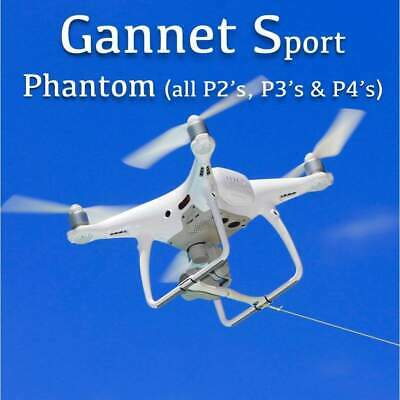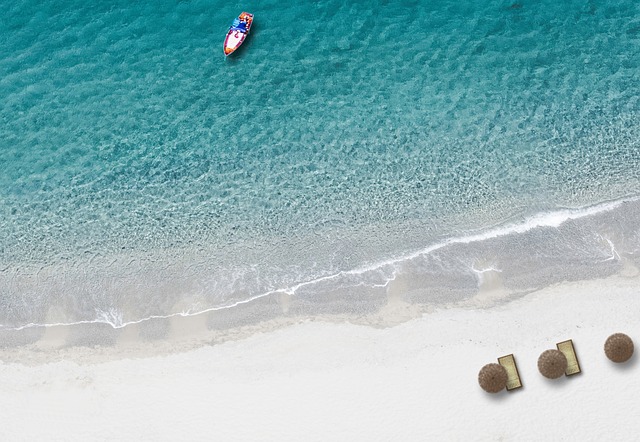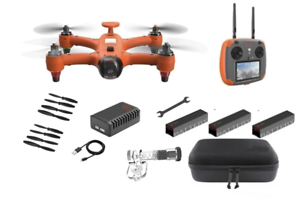
We'll be covering the basics of a drone-fishing rig in this article. We'll also cover what you need to be aware of when choosing your drone and how it will perform over time. We'll then discuss ways to get the best out of your drone. Continue reading for more tricks and tips. You will soon be able to fly the drone of your dreams. Let's go !... and maybe catch some fish!
Basic drone fishing gear
You will need a good set hooks to get started with drone fishing. Double the fishing line, and make sure it is mono or braid. To attach a Cat's Paw Loop or Uni Knot to the line, you should tie it. You'll also need a sinker between 2-8 ounces and hooks for attaching to each second section of your backbone. Attach the snap swivel's lead loop to your drone's end loop.
There are many ways to create a fishing drone. A basic one involves attaching a hook to the landing gear of the drone and spinning it until the line releases. Another low-cost option is to use a dropper and drop line. The dropper lets you keep the main line down below the drone and not get tangled with the propellers. The fishing drones can also be equipped with accessories, such as a battery pack and a dock.
After you have purchased the drone fishing rig you will need additional equipment. You will need a long fishing line (about 700 meters), as well as a bait-dropping device. These are optional accessories, but they can make your drone fishing adventure more enjoyable. A good drone will allow you to see more of your surroundings and be able spot fish much easier.

Payload on drone fishing gear
Be aware of safety precautions if you want to catch fish by drone. Your drone should not be flown in strong winds or rain. Here are some steps to follow:
First, ensure your drone has a strong carrying capacity. It won't be stable if loaded with braided rope or heavy lures. It may also blow off its course if you are fishing along the coast. You should also check the local laws and regulations as some might not allow drone fishing. After you have decided to go fishing with your drone, it is important to make sure that the drone has enough carrying capacity.
The next step is to determine which accessories you'll need to mount on your drone. To minimize the problems of weight distribution, it's a good rule to use a rigging that has a central connection point. The best attachment points for drones are motor struts, landing gear, or legs. You should avoid attaching anything to the camera or to the gimbal. This can cause damage. An easy solution is to tie fishing line at each corner. This can be secured with tape to prevent it from falling out.
Battery life for drone fishing gear
Before you go fishing with the drone, check that the batteries are charged and all other equipment is working properly. This will keep your drone's battery charged and allow you to fish instead of worrying about charging it. Some drones have solar panels or car batteries that allow you to charge them. You should start with fully charged batteries. This will ensure your drone is ready to fly when you reach your fishing spot.

You should also consider the drone's flight duration. There are some models that have longer flight time than others. However, a drone with a flight time of twenty-two minutes is sufficient to get the job done. This is great if the drone can fly for hours on the water. You should also be aware that drones with low endurance are inoperable, making it difficult to catch fish.
After you have setup your fishing rig, attach the fishing line clip to either the legs or the motor struts. Next, attach the bait line to the fishing line. Before you start to fly the drone, lock the reel and then unlock it when you are ready to drop the bait. You will feel tension build up when the line is pulled out. The drone will then drop the bait into water. You should charge the battery every time you use it, otherwise it might not function properly.
FAQ
What are the rules of operation when using drones?
Register your drone with the FAA. This registration process includes submitting information about the device, including its weight, size, battery capacity, and operating frequency. A FAA identification number is also required.
What US states have drones made legal?
A drone can be legally operated for recreational purposes. The Federal Aviation Administration (FAA), has established guidelines that allow the use of small unmanned aircraft systems (UASs). Before UASs can be flown, they must be registered with FAA. These UASs can also be flown by commercial operators if they are allowed to fly under certain conditions.
Is Drones Prohibited?
The FAA prohibits drones from flying within close proximity to airports, stadiums and sporting events, as well as nuclear power plants, hospitals and prisons. They allow them to fly at nights using GPS technology.
Is it safe to drive while flying a drone?
Flying a drone while driving is dangerous because you could crash into another vehicle or object. You may also run into pedestrians and other animals. A collision with power lines, trees, buildings, or power lines could cause serious damage to your vehicle.
What is the best drone to buy for beginners?
One of the most popular beginner drones is the DJI Phantom 2 Vision+. This model comes equipped with a 4K camera, which allows you to take high-quality aerial photos and videos. Its GPS system makes it easy to navigate the drone.
Statistics
- According to Indeed, a drone pilot gets paid $25.73 per hour on average in the US. (dronesgator.com)
- Research and Markets predict a growth rate of 51.1% over the next five years. (thedroneu.com)
- According to the multiple listing service (MLS), houses and apartments with drone photographs are up to 68 percent more likely to sell than those without pictures. (thedroneu.com)
External Links
How To
How to Fly Drones for Beginners
A drone refers to a remote-controlled aircraft designed for aerial photography, surveillance and scientific research. Drones have been in use since World War II. DJI introduced their Phantom series of quadcopters in 2010, but commercial use only began in 2010. There have been many drones made since then. These range from beginner-friendly drones like Parrot AR Drone 2.0 to more advanced multi-rotor craft like DJI Mavic Pro.
There are several ways to fly a drone, including;
-
Remote control: This uses a remote control device that attaches to your hand and allows you control the drone along its flight path. There are two main types, On/Off switches (like radios) and joysticks.
-
Manual Control - This method uses a smartphone app to remotely control the drone using GPS coordinates. The app will provide instructions and help you to locate the drone.
-
Autonomous Flying - This allows the drone to take over all of the piloting duties. It allows the drone to fly independently without any human intervention. A drone must have a builtin camera and sensors capable to capture images and other data.
-
Triggered flight - This is similar to manual control except that the pilot sets up a preprogrammed route and the drone follows the route until it reaches its destination. After the program is complete, the drone automatically returns to the ground.
-
Landing Gear - Some drones come equipped with landing gear that allows them to land safely if they lose power or run out of battery during flight.
-
Goggles-Some pilots use goggles to protect their eyes from debris during operations.
-
Camera - Some drones can be equipped with cameras which enable you to capture photos from the sky.
-
Obstacles-Some drones come with obstacle avoidance devices that keep them from hitting obstructions.
-
Speed – Some drones can reach speeds in excess of 40 mph.
-
Battery Life - Most drones are capable of lasting between 20 minutes and three hours, depending on the power that you use.
-
Some drones are capable of traveling up to 30 miles depending upon their make and model.
-
Power source – Some drones require external power sources, others require internal batteries.
-
Weight - Some drones can be as light as 1 pound while others can reach 4 pounds.
-
Size - Drones come in many sizes, from small gadgets that fit in one's hands to large craft that weigh more than 50 lbs.
-
Price - Drones come in a variety of price categories, including high-end models which can run into the thousands and low-cost options that can start at $100.